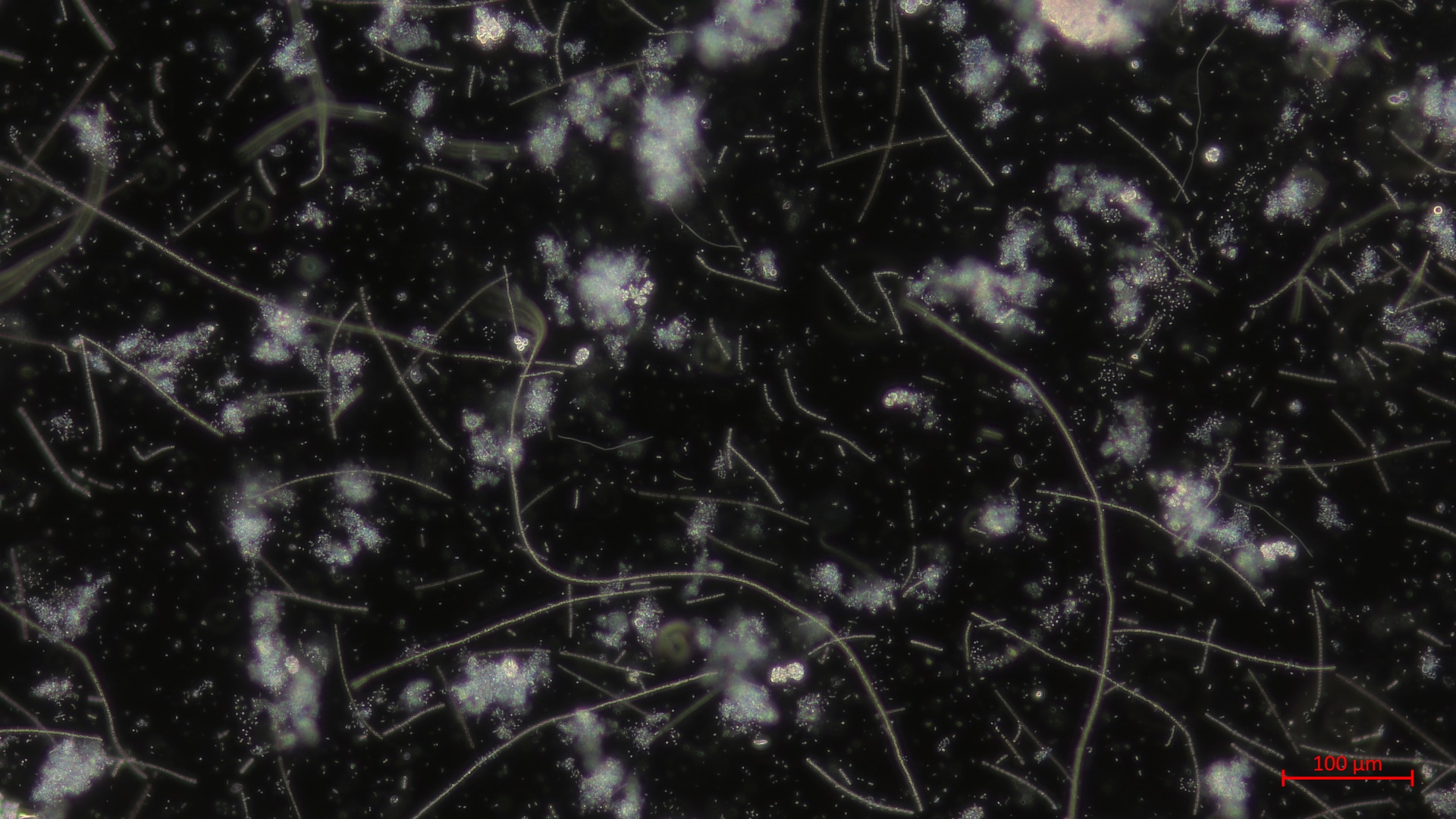Thiotrix
Thiothrix is capable of using reduced sulphur compounds (e.g. hydrogen sulphide) as an energy source and depositing intermediary elemental sulphur under oxygen-depleted conditions. The stored sulphur can be clearly identified in living samples as pale, strongly refractive points. This filament can occur with high sludge loads and in industrial wastewater treatment plants, and causes bulking sludge.
Morphology:
| Filament position: | projecting out of flake |
| Branching: | none |
| Movement: | none |
| Growth habit: | straight / slightly curved |
| Aufwuchs: | absent |
| Constrictions: | none |
| Sheath: | present, but not in all strains |
| Transverse walls: | visible, the S-granule is often hard to identify |
| Cell form: | square to rectangular |
| Length of filaments: | 50 – 500 µm |
| Filament diameter: | 0.8 – 2.5 µm |
| Gram staining: | mostly negative |
| Neisser staining: | negative |
Factors promoting growth:
- decaying sewage
- insufficient oxygen supply
- high C/N/P ratio, lack of phosphorus and nitrogen deficiency
- sludge load > 0.1 – 0.6 kg BSB5/ kg TS * d
Countermeasures:
- improve the oxygen supply
- pre-ventilation of sewage
- dosage with precipitants with high share of bivalent iron (FERRACLAR CLASSIC) before biology








